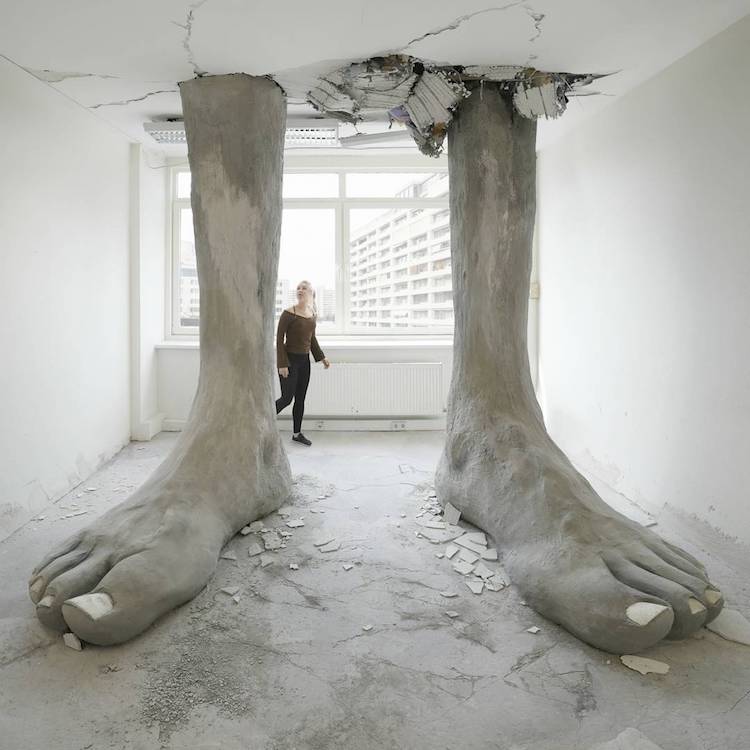Welcome to Spotted, our bi-weekly round-up of our favorite sightings from the worlds of contemporary ceramic art and contemporary ceramics. We’ve made some changes around Cfile.org, including the way we deliver our Spotted posts. In addition to keeping our Spotted posts bi-weekly, throughout the week, we will continuously update the list with our most recent favorite finds. We hope you like what we’ve done with the place. Stay tuned for more!
Drink Up Baby: Maikr’s Sleek Coffee Cups
Made of thick glazed stoneware, Maikr‘s Mato coffee cups are informed by wine glass geometry to enhance the flavor and aroma of the coffee as it encourages drinkers to swirl their devil’s brew to aerate it
Mato coffee cup’s unique wine glass geometry lets you swirl the coffee around to release more aroma. The upper half of the cup tapers inwards to direct the aromas to your nose to allow you to capture the rich notes of the roast.
Daily Coffee News writes German architect Peter Strzebniok is the designer behind the Maikr Mato line, who collaborated with East London coffee roaster Climpson & Sons Coffee Roasters on the line. The modular range also includes two handle-less pour over cones.
James Franco Teams Up with Ceramist Brother for Art Show
James Franco is collaborating with his brother, artist Tom Franco, on a series of ceramic sewer pipes for their exhibition “Pipe Brothers: Tom and James Franco” at the Ceramics Research Center at the Arizona State University Art Museum.
Artnet writes the seven and a half feet tall, 750-pound pipes are made from vitrified clay from Phoenix’s Mission Clay Products, which produces roughly 15,000 tons of clay pipes annually. Artist come to work in the factory, where they can carve, color, shape and glaze the pipes any way they choose. The factory then fires them.
“There were so many firsts for me with the medium of clay—the size of the sculptures, working conditions, immersion in process. I’ve completely fallen into obsession with the cylindrical form; it’s like finding primal shape that we can’t live without.” – Tom Franco
Tom Franco is a mixed-media artist based in Oakland, California, where he founded the Firehouse Art Collective.
Breakthrough: Mankey’s Enormous Feet Land in Berlin
You know what they say about a big feet? (Us either). Even so, Spanish artist Mario Mankey‘s giant feet appeared to have stomped through the roof of The Haus, an old bank-turned-art space, in Berlin. Ego Erectus, which ran from earlier this year from April 1 – May 31, 2017, was part of larger exhibition alongside more than 150 artists, who filled the entire building with their irreverent works, Brooklyn Street Art writes.
[It’s] an enthusiastic life-affirming joyful and pissed-off D.I.Y.-flavored fun-haus of fully realized installations, painting, projections, exhibits, and interventions.
DesignBoom described their account of Mankey’s work:
Standing in the middle of the room — and seemingly the base of what is a colossal creature hidden in the floors above — the limbs engage with the architecture of the site, with pieces of the ceiling scattered across the floor.
Historic Gas Stations Named Iranian Monuments
Iran’s two oldest petrol stations have been placed on the country’s national heritage list, making the “monuments” part of the country’s first petroleum museum. The Art Newspaper writes these building aren’t just any petrol stations. They make the cut because of some they feature some extraordinary examples of Islamic tile and architecture as well as more contemporary Art Deco motifs.
But these are no ordinary petrol stations—Fourth Fuel Distribution Station in downtown Tehran, which was built by the Anglo Persian Oil Company between 1925-41, is covered in bright glazed tiles and boasts the same classic Islamic architectural features, including geometric patterns and arches, that can be seen on some of the country’s most spectacular buildings.
The other petrol station, which dates to 1927, is built from stone and has strong Art Deco influences, showing the popular British aesthetic at the time.
The Iran Petroleum Museum and Documents, located in Abadan, opened in January. The museum’s director said in a press release the Fourth Fuel Distribution Station was the second gas station in the country, built only after the Abadan Gas Station – the oldest in the country and home to the museum itself.
The addition of the two petrol stations is a nod to the museum’s mission to recognize and document Iran’s century-old oil industry.
Do you love or loathe our top favs list from the worlds of contemporary ceramic art and contemporary ceramics? Let us know in the comments.



















Hi guys,
Is the big feet maken by ceramics/clay?
Thanks!